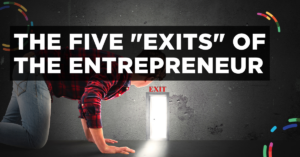What’s the hiring process at your company?
Do you carefully plan out your personnel needs a minimum of 90 days in advance, execute a rigorous (but fair) multi-step recruitment, interview, and offer process…all while maintaining a consistent bench of diverse and qualified candidates for future positions?
Or is it more like this…
“We’re BURIED under all this work. We don’t have time for 15 different interviews…let’s just get someone in here YESTERDAY!!”
If your “process” sounds more like the second scenario than the first, don’t feel bad. That was us, too.
But after dozens of miss-hires and years of trial and error, we finally nailed a framework that’s:
- Simple to execute
- Delivers predictable results
- Balances speed with process, and…
- Gets us great people who align with our culture who are ready, willing, and able to add value starting DAY 1
We call it the 13-Step Scalable Hiring Process…
The Elements of a Purpose-Driven Hiring Process
A great hiring process isn’t just about following all the laws and guidelines (although that is very important.) It also means taking into account your businesses’ needs and goals.
The right hiring process is…
#1) Guided by Your Core Values: If you have core values (which you really should), those values should be front and center throughout the process, helping guide your hiring, firing, and training decisions.
#2) Pro-active: Take it from me, a rushed hiring decision only turns out the be the BEST decision through luck! And luck isn’t reliable. To do an honest and thorough search for the best talent out there, you need time. Being pro-active and having a plan in place will help give you the time and brain space you need to make the right decision.
#3) Focused on Bettering the Business: If you’re hiring with a closed-minded, “like us” mentality, you’re going to shut yourself off from growth and diversity and become stagnant. So, while company culture is important, you also need to make sure you are hiring people that can challenge old, outdated ideas and lead your business into a future that’s even better!
Before You Begin: Know the Why and Make It Stick
I know it can be tempting to want to jump right in and change up your current processes.
But it’s important to remember that in order for you to implement this hiring process in a way that makes it stick, you’ll need to Know the Why. That’s one of our core values here at Scalable, and we think it’s applicable in any scaling business.
“Know the Why” means getting clear on the reasons why you are implementing a process or making a decision in the first place. It’s all about being intentional.
If you can’t back up your processes with key reasons why it will help improve your business, you’ll never be able to communicate the plan in a way that gets everyone on board. And you really do need everyone on board to make a process stick.
When it came time to build this process, our Why Statement centered around answering the most important question in hiring; “Who should we be hiring for our company, and how can we successfully find those people?”
To answer this question, we ended up ruminating on 4 Essential Questions every business should know before they begin hiring.
Your answers to these questions will help influence how you model the 13-step process in your own business. If you’re a business leader, you likely already have the answers to these questions, but just in case, let’s run through them together.
Question 1: What does your business do? How does it do it?
Your new hires and candidates need to know what they are buying into when the sign onto your team. They need to have a clear understanding of what differentiates you from your competition and what they are becoming a part of.
These questions also help you identify what your selling point is for prospective talent. After all, if you want to entice the best employees, you need to know how to sell the position.
So, what’s your elevator pitch?
Question 2: What do you value as a company? What would you consider a deal breaker?
This is where your core values really come in handy. When you’re hiring new members, it’s important that you’re able to identify values and qualities you look for in potential employees.
You’ll want these attributes to be ones that have proven to be successful in your company’s environment.
Does your candidate need to be a team player? How important is it that this employee can be self-directing?
Here’s a tip: having some “We Believe” Statements can help you identify the little things about your business that may not be in your core values, but are still important attitudes an employee needs to be successful at your company.
Likewise, it’s equally important to know what your deal breakers are.
What doesn’t thrive well in your business? What attitudes or characteristics could create undue hardships or burdens because that person just won’t fit in well with your team members?
Take note of those deal breakers as well, so you can look out for them throughout the process.
Question 3: Tell me about your leadership team.
This is a question that very well might come up in your interview process so it’s important that you’re able to communicate what your leadership team is like.
What attributes lead people to be promoted into leadership positions? What qualities and characteristics have made them successful as a leader?
Ideally, you want to be hiring on potential leaders, so getting clear on what qualities you want to replicate from your current leaders will help immensely in your employee search.
Question 4: Tell me about your most successful teammates.
Whether it’s individual contributors, mid-level managers, or other employees, what are the characteristics that make them successful?
You want to make sure you know exactly what great employees exemplify, so you can look for those traits in your candidates.
Gathering Feedback
Once you’ve sat down and answered these questions honestly, it’s time to get feedback. You can do this in one-on-one conversation, spontaneous chats, more formal group meetings, or surveys. You can also gather external feedback from review sites like Glassdoor.
However you plan on gathering feedback, make sure it comes from all levels of the organization. And don’t forget your HR team! Those pros will have great insight and experience setting expectations and training, as well as defining great employees and deal breakers.
Once you get clear on your purpose and your ideal employees, it’s time to start building out your own hiring process.
The 13-Step Scalable Hiring Process
The 13-Step Scalable Hiring Process can be organized into 5 buckets: Prep, Post, Potential, Performance, and Proposal.
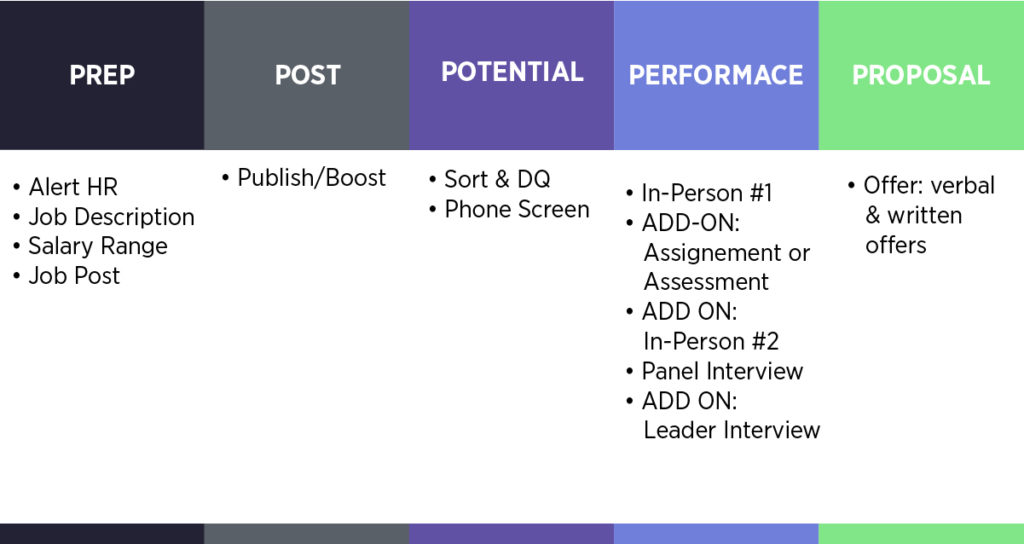
As you’ll notice, each bucket has a few steps to complete, for a total of 13 steps.
That feels like a lot, I know, but we promise it’s worth the effort.
If you complete this process, you’ll be able to rest easy knowing you’ve done everything in your power to hire the perfect fit for your business.
Steps 1-4: Prep
These first 4 steps are probably the most important. It’s here that you will begin to apply what you learned from answering those essential hiring questions.
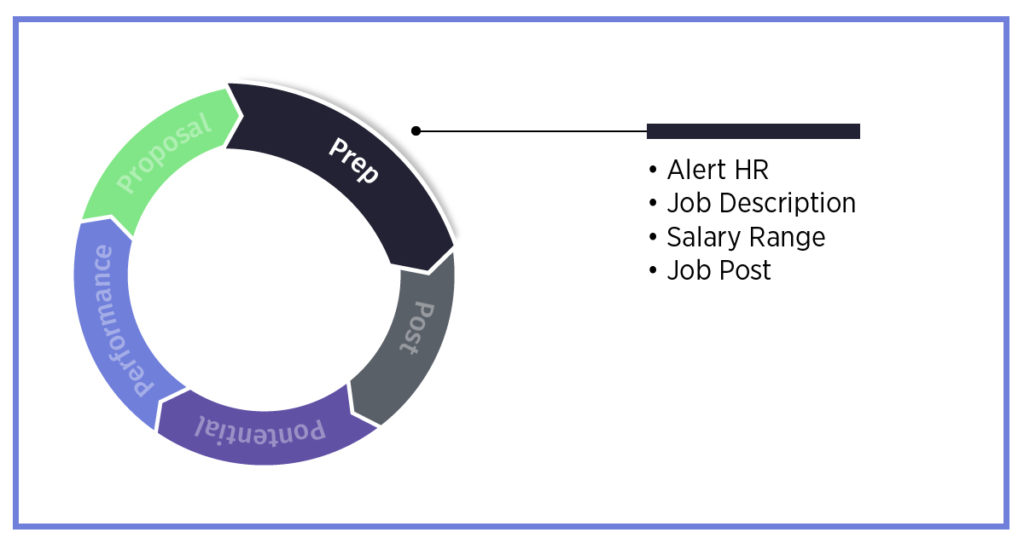
It’s all about getting your ducks in a row before you let people know you’re hiring.
You’ll need to…
- Alert HR
- Create a job description
- Decide on a salary range
- Post the job
Step 1: Alert HR
Your first step should be to let your HR team know that you will be needing to hire a new employee, since they will play a big part in the process.
We also like to alert the members of that team, as well as the company as a whole. This allows them to become ambassadors for our company and give any referrals or recommendations for potential applicants.
It also lets them be more engaged and use their awesome networks to help spread the news.
Step 2: Create a Job Description
Next you’ll want to put together the job description.
This document is critical because it helps prevent you from tailoring the position to a person, rather than picking the right person for the position.
It can be tricky when you have an amazing applicant show up who’s got everything your looking for in a culture fit but is lacking the experience or particular skills needed to do the job.
Having a list of critical elements for each position also helps foster an environment of success where everyone knows who is responsible for what major tasks. This really helps provide clarity, cutting down on situations where there’s a miscommunication when it comes to roles and responsibilities.
In your job description, you’ll want to include:
- Critical elements/tasks for the position
- What success looks like in the position
- KPI’s that will be used to track success
Step 3: Determine a Salary Range
Deciding on a salary range will help you narrow down your candidate pool, and make sure your candidates have an expectation for what you’re willing and able to pay. Transparency really helps keep you and your candidates on the same page throughout the process.
It’s also a good way to keep your budget in mind. A Happy CFO means a happy company!
Step 4: Write the Job Post
This is the most critical step.
Your job posting is the front facing description that every potential applicant will see. It’s the piece that will tell applicants everything they need to know about the position.
An effective job post will also help people self-filter and determine if the position is right for their skills, desired income, and many other aspects. Not to mention, applicants will use it to tailor their applications and cover letters.
Essentially, setting up a thorough job posting will set you up for a successful hiring process.
In your job posting, you’ll want to include information about
- Your business’s goals, culture, and any other helpful information
- The position responsibilities and KPI’s
- The required experience level
- Salary/benefits (if possible)
- What success looks like in the position and the company as a whole
Again, this is where your essential hiring questions come in handy. The more specific you can get about what you’re looking for in advance, the easier and quicker it will be to find the perfect fit.
Here’s a tip: Chat with you content teams and copywriters to make sure the “sales copy” for your position (aka the job description) is specific, engaging, and easy to understand.
Step 5: Publish and Boost
Once you’ve created a killer job description, it’s time to post the job.
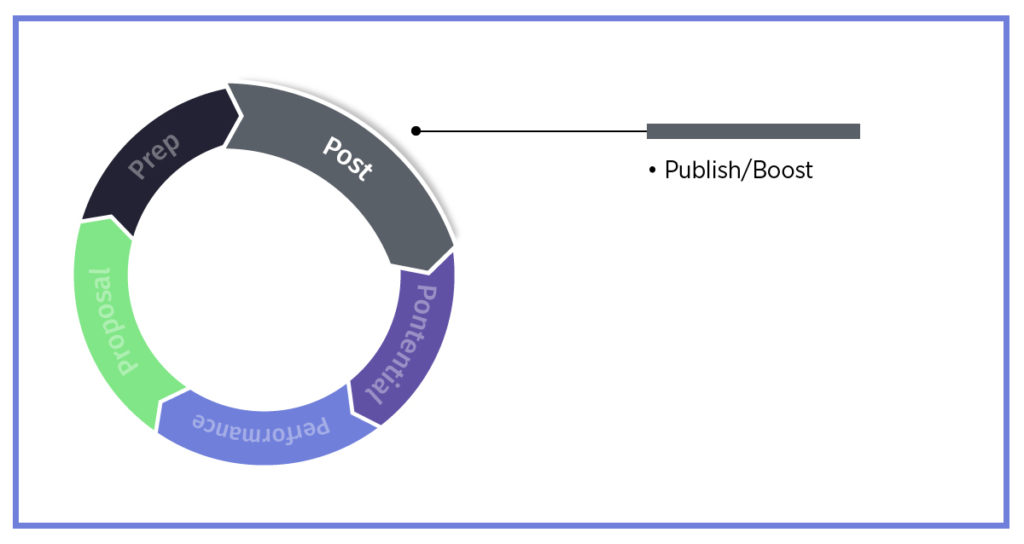
All you need to do is…
- Get approval for your job description and send to HR to publish and boost your post if you have the budget for it
Once you get approval from your teams/execs, send the job posting to HR so they can get it out!
There’s a ton of applicant tracking systems out there to help you identify top sources for the candidates you’ve hired (we use a software called Workable).
You can use that data to help you determine where you should be posting your jobs, and where it might be worth the money to boost those posts (or at least have your employees share the job openings on those sites.)
Steps 6-7: Potential
Once the post goes live, it’s time to start looking at the pool of potential hires.
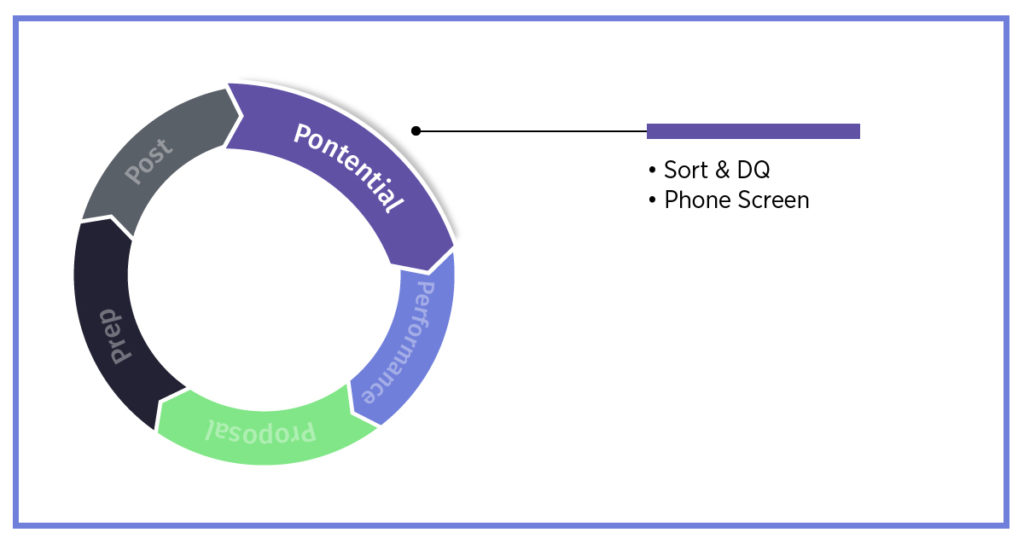
You’ll want to start doing this about 3–5 days after the posting goes live. We typically run through this filtering in batches, but it really depends on you and your HR team’s bandwidth.
You focus should be on filtering out undesirable applicants. You’ll want to…
- Sort, rank, and disqualify applicants who are unqualified
- Phone screen applicants
From this point on, the process needs to be tailored to your team’s individual capacity.
One of the best ways to scale up your hiring is to build up a team of dedicated hiring managers to help out with the rest of the process.
Step 6: Sort & DQ
First, dive deep into your applicant pool.
Take note of what you like or potential red flags.
Leave sticky notes with follow-up questions.
Sort through the applications so you know who’s clearly ready to progress on, and who you may need more clarity from before they move on or are disqualified.
Once you’ve confirmed with your hiring managers and your team where each applicant lies, it’s time to move onto the phone screening.
Step 7: Phone Screening
This is the first touchpoint with the applicant, and it is 100% owned by the people and culture team.
The first call is usually centered around giving more information about the company culture.
You’ll want to cover:
- information about the team
- your company’s core values
- give as much information about the hiring process as possible
This is also an opportunity to let people know if they are disqualified from the process and provide reasoning and feedback if they are. It’s important that you are following up with everyone, including those you don’t move forward with. After all, they put in a lot of valuable time applying to your position.
You’ll also want to get information about the applicants themselves.
What skills do they have that make them qualified? What new or different perspective can they bring to the position? Have they done their research for this position and our company?
To help you along with your interview process, here’s a list of some of the more common interview questions we ask:
1. Tell me about your current/past experience with _____. 2. What do you want to do differently in your next role?
3. When was the last time you displayed true excellence in your role? What did you do and why was it excellent?
4. Why did you decide to apply for this position?
5. What have I not asked you that I should have?
6. We are currently offering $xxx. Does this align with the compensation you expect of this role?
After the phone screening, you’re ready to advance the desired applicants.
Steps 8-12: Performance
Now’s the time to confirm that the candidate can perform the essential tasks and elements of the position, and getting a variety of perspectives on the candidate.
You can do this a few ways:
- An in-person interview
- A paid assignment or assessment (optional)
- A second in-person interview (optional)
- A panel interview
- A leadership interview (optional)
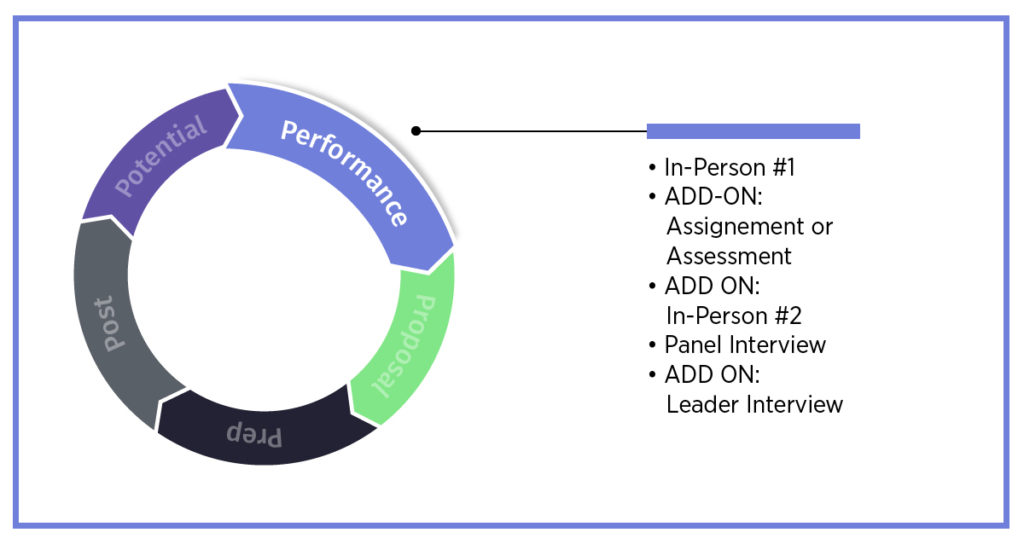
As you can see, every step isn’t required, and you can tailor the process for each position.
For example, hiring for an executive position should probably include a leadership interview and a few in-person interviews. On the other hand, hiring for a base-level position may only require a panel interview and an in-person interview with the supervisor.
Let’s review each potential step…
Step 8: In-Person Interview #1
This first in person interview should happen regardless of the position you are hiring for. Typically, you’ll want to have the hiring manager and a director or alternative manager run the interview.
By having 2 other people besides HR run the meeting, it helps you get a more diverse perspective on the candidate. The hiring manager will also have a better sense of the position requirements, so they will be a better judge of how qualified the person is for the job.
Step 9: OPTIONAL Assessment/Paid Assignment
Assessments and assignments are great options for people who are in more creative or technical positions. We typically have all our designers, writers, software engineers, and ad managers do some form of a paid assignment.
This gives potential hires an avenue to put their money where their mouth is and show that they can deliver. It also helps us get a better sense of their work style.
We usually only reserve this step for the top 2 or 3 candidates.
Step 10: OPTIONAL In-Person Interview #2
If you’re hiring on for a high-level manager, director, or executive, you may want them to do a second interview.
This interview is usually centered around management and leadership skills, so we like to invite another director, key team member, or manager to run this interview.
Again, this is to help get more information and perspectives on if this person is a good fit for the position.
Step 11: Panel Interview
Regardless of the level, we highly recommend you put your final 2–3 candidates through a panel interview with the hiring manager, director, and 2–3 key team members.
Panel interviews are a great way to see if a candidate works well with the team dynamic.
In this interview we usually…
- talk through the core values and what they mean to the team
- review company culture and what it’s like to work at our company
- dive deep into the position’s requirements and everyday tasks
Once the panel interview is complete, it’s time to start paring down to the final candidate.
At this point you’ll want to loop back in HR to listen to feedback on the 2–3 candidates that made it to the panel interview.
To help make the decision, we like to talk about the pros and cons of each candidate and discuss any potential red flags.
Ultimately the hiring manager will make the final decision, but all the different perspectives from the team really helps everyone get buy in on the final hire.
Step 12: OPTIONAL Leadership Interview
If we are hiring for an executive position, we always like to end with a leadership interview with the executives.
An executive hire will have a major effect on the company as a whole so it’s imperative that you get buy-in on the candidate from the rest of the leadership team.
Finally, after deliberation on all the feedback, you should have no problem deciding on the final candidate. At that point it’s time to offer them the job!
Step 13: Proposal
You’ve made it to the final step in the hiring process: Offering the position!
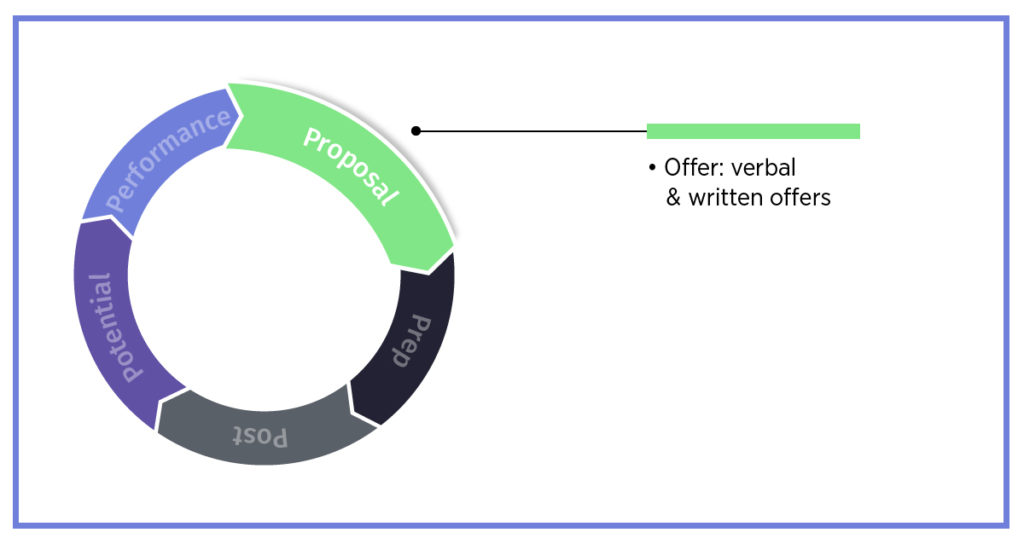
At this point, the hiring manager has put in so much work that we always like to have them call up the candidate and offer the position.
In that call, you should
- cover information on the salary
- review any benefits
- schedule a start date
After explaining all of that information, we like to ask for confirmation of the position by saying something along the lines of…
“Would it be safe to assume that if we offered you the position of _____ today at a salary of $_____ That you’d accept the role?”
Once the candidate accepts, your head of HR will send out the formal hiring documentation papers to sign.
And with that, you have officially finished the hiring process!
So, pull out a piece of paper, and start today by answering those essential questions about hiring at your business.
In no time, you’ll be attracting and retaining the very best talent.



